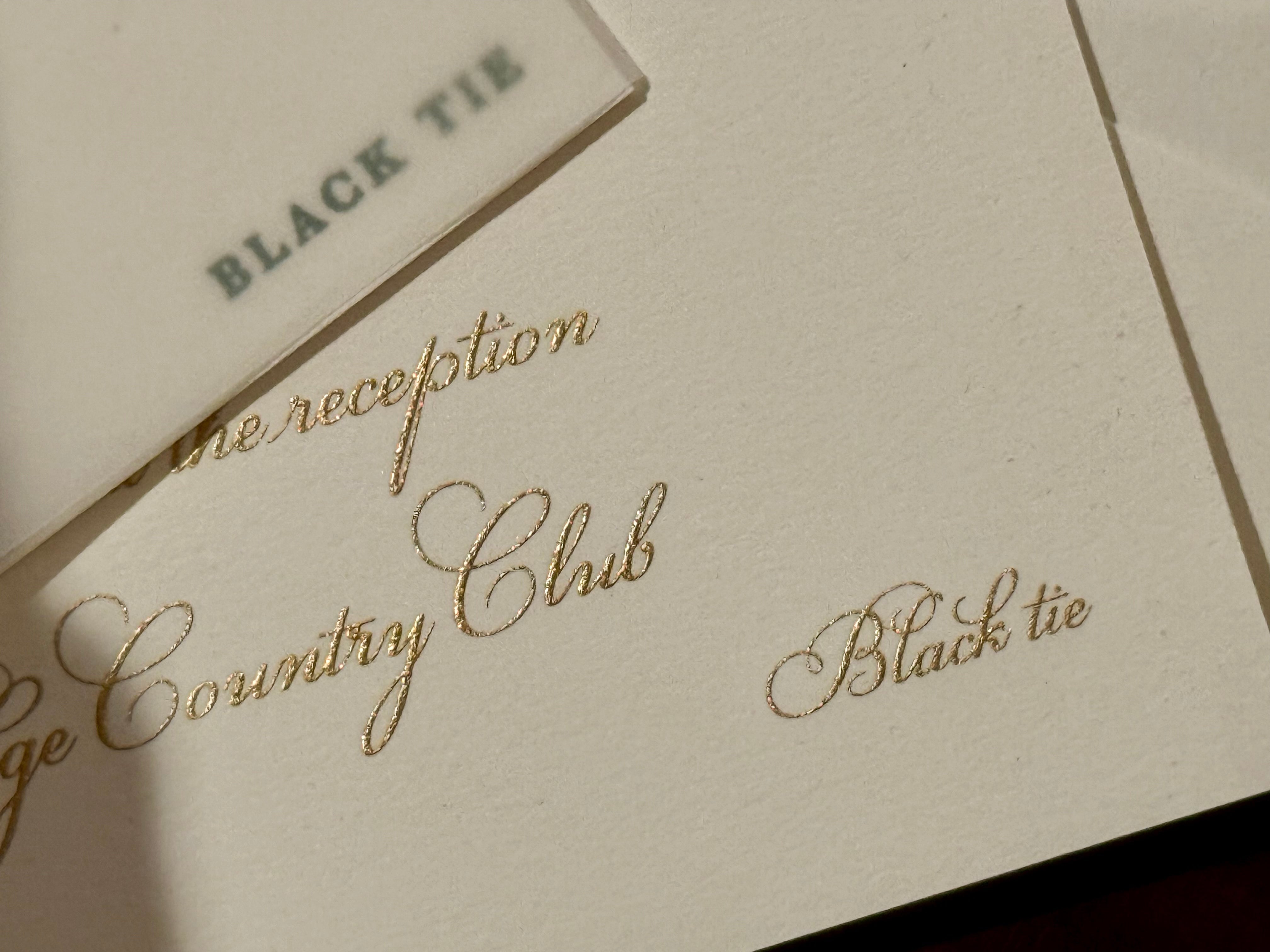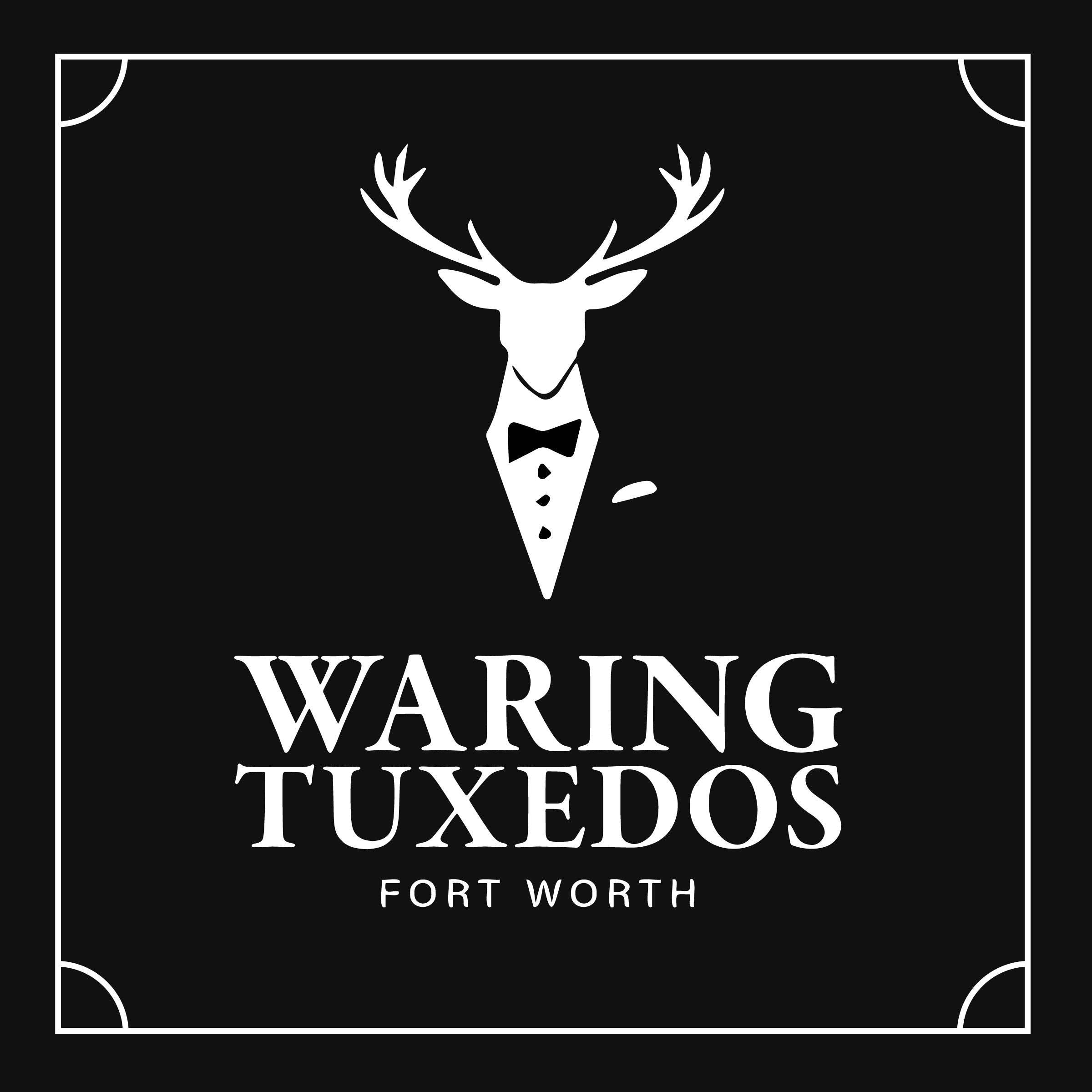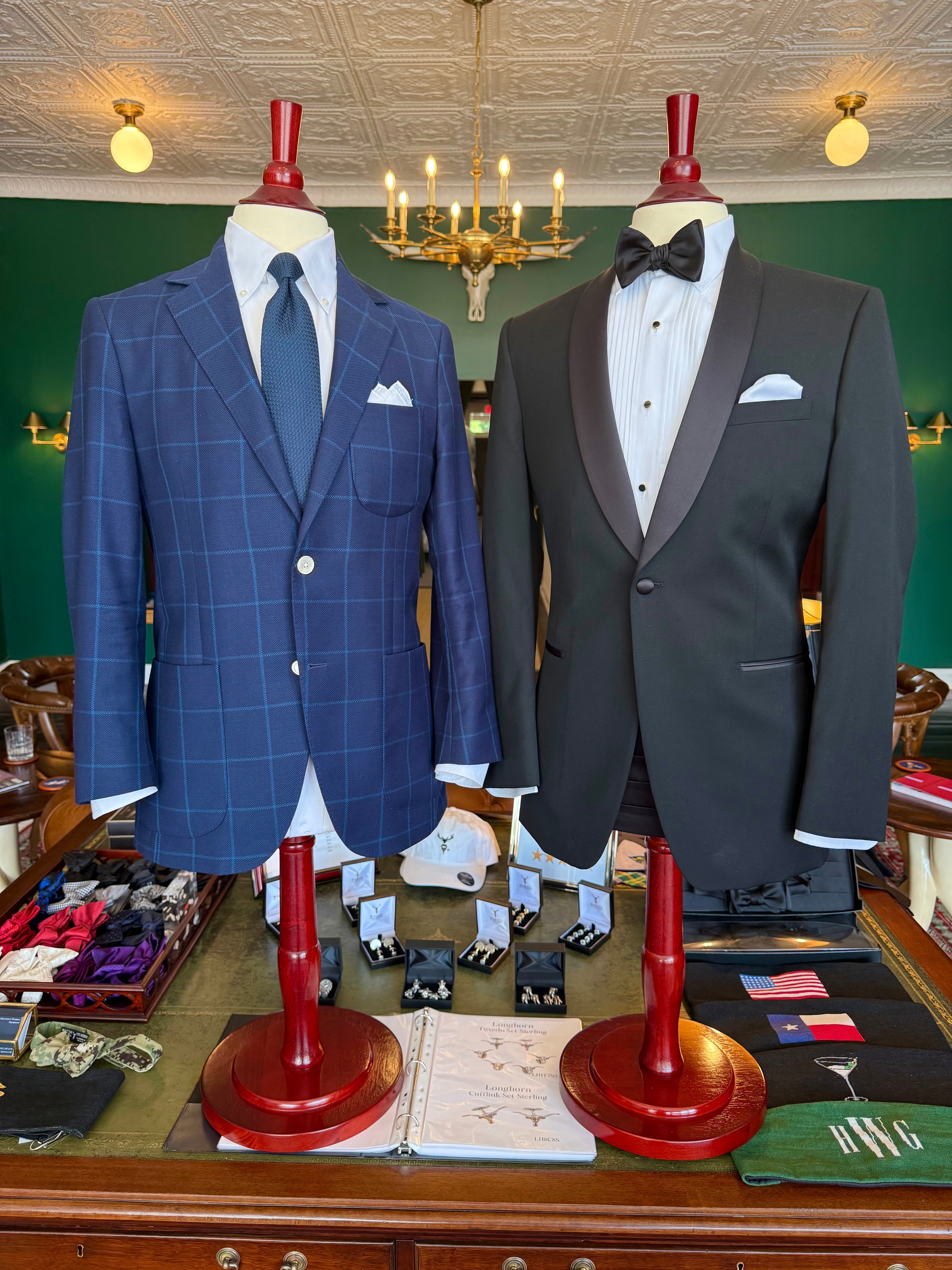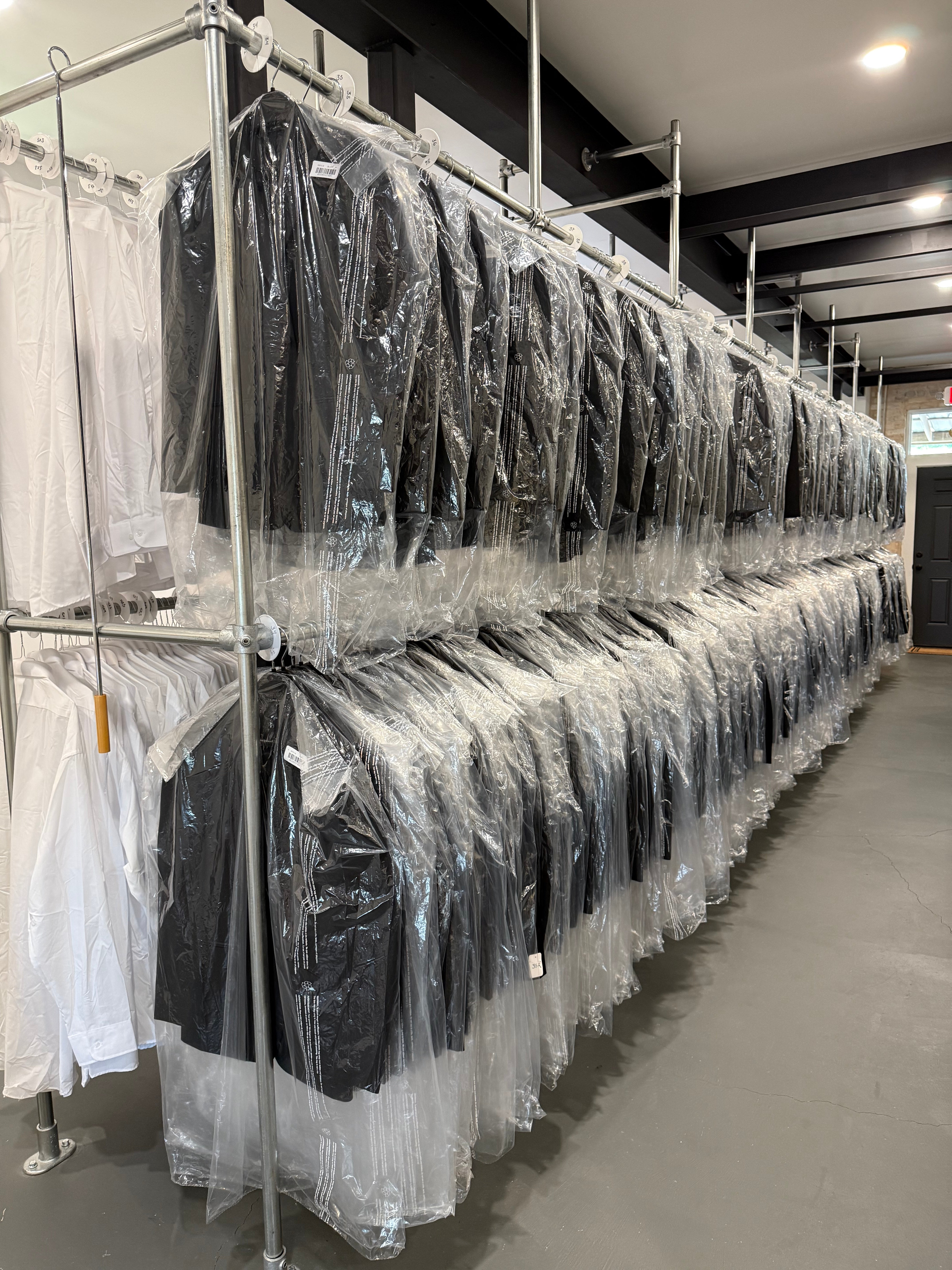
Deciphering the Dress Code: "Black Tie," "Black Tie Preferred," and "Black Tie Optional"
You’ve been invited to a wedding! How exciting! Your letter opener pierces the beautiful envelope; you remove layers of vellum paper and admire the invitation’s texture and weight. Perhaps you notice the gold-foiled calligraphy or watercolor map of the weekend’s venues. Your eyes eventually wander to the bottom of the invitation and it states a dress code. There’s a good chance it says either “Black Tie,” “Black Tie Preferred” or “Black Tie Optional.” You’re still left wondering what to wear.
I have seen every possible dress code on an invitation, from Cowboy Chic to Costume de Rigueur (which means White Tie in an iykyk sort of way), but our customers regularly ask about the three common black tie variants: Do I have to wear a tuxedo? Do they expect me to wear a tuxedo? Will I be overdressed in a tuxedo? Will I be underdressed without a tuxedo? If the answer isn’t immediately clear from knowing the host and her wishes, the following advice will ensure you’re appropriately dressed despite the confusion.
What is Black Tie?
Black Tie is the most common formal dress code today, although for purposes of an invitation, Black Tie was traditionally synonymous with semi-formal. Formal Attire referred to White Tie and tails. You might still find semi-formal on certain society invitations, so it’s helpful to know that semi-formal does mean Black Tie.
This means a traditional black tuxedo and accessories: black bow tie in the same material as the coat’s lapels (satin or grosgrain), tuxedo shirt with studs and cufflinks, a black cummerbund or waistcoat, tuxedo trousers with a single corresponding satin or grosgrain stripe, and black tuxedo shoes (often patent leather). It means wear a tuxedo. Never wear a long tie with a tuxedo, even though you might have seen it done. When in doubt, stick to the classic black and white formula and you cannot go wrong.
Generally, events such as traditional evening weddings, major charity galas, and debutante presentations at a country club require black tie, and they expect you to know what that means.
Does this mean there are no options for sartorial flair within black tie? Not at all! Given the nature of the event, you can still add a personal touch. If the wedding is in July, an ivory dinner jacket might be an appropriate replacement for the black coat. If you went the same school as the groom, a bow tie and cummerbund in the university’s colors might be appropriate. Meeting the King of England? Stick with black. Attending your fraternity brother’s wedding? A fun cummerbund set is probably appropriate. The important point is Black Tie means wear a tuxedo. Do not wear a suit and you will be appropriately dressed.
What does Black Tie Preferred Mean?
Black Tie Preferred is the most ambiguous dress code, and my least favorite to encounter. Fundamentally, it means they expect you to wear a tuxedo. It is a polite way to guilt-trip you into wearing a tuxedo while ostensibly offering you a way out if you neither own one nor want to pay for a rental. If the host really wanted you to have an option, she’d have put “Black Tie Optional” on the invitation. Whether you want to wear a tuxedo or not, go ahead and wear the tux. The other guests will have shared the same thoughts and you will be underdressed in a suit. If you HAVE to wear a suit, stick with dark navy or charcoal gray. A dark bow tie will help you blend in better in a sea of tuxedos.
Does Black Tie Optional Mean I Can Wear a Suit?
Black Tie Optional implies a preference that you wear a tuxedo, but it offers a more genuine option to wear a suit if you prefer. At Waring Tuxedos, we strongly recommend you wear a tuxedo to Black Tie Optional events. If Black Tie is anywhere on the invitation, you can never go wrong by wearing a tuxedo, and the host will appreciate you making the effort. If you choose to wear a suit, we still suggest wearing a dark navy or charcoal to blend in better with those more formally attired.
With Black Tie Optional, one consideration is the time of day, venue, and season. For evening church weddings in December, 99% of guests will be in black tie. For a 5 p.m. wedding on a beach in Mexico, I would expect to see a few white dinner jackets and a larger number of tan, linen, or seersucker suits.
Are these hard and fast rules or are there exceptions?
The only hard and fast rule is that Black Tie means wear a tuxedo – do not wear a suit.
Beyond that, black tie and black tie preferred give you the option. If you’re going to a nice indoor venue such as Colonial or River Crest Country Club, the Fort Worth Club, Bowie House, The Drover, or the Crescent Hotel, most guests will be more formally dressed. If the wedding is at a ranch west of Fort Worth, you will likely encounter a mix.
Regional expectations differ as well: In Texas, cowboy boots are almost always considered appropriate with a tuxedo, and you will often see exotic boots such as alligator or ostrich that look formal enough to be appropriate. A number of presidents, senators, politicians, and businessmen have made formal cowboy boots entirely acceptable for decades. When we make a custom tuxedo, we take into account whether a gentleman will wear velvet slippers or cowboy boots to ensure the length and leg width is appropriate.
Waring Tuxedos’ Advice:
When in doubt, it is better to be slightly overdressed than underdressed. When Black Tie is on the invitation, we suggest wearing a tuxedo.
If there is any doubt or confusion remaining, Waring Tuxedos is here to help you decipher the dress code given the circumstances. With the best tuxedo rentals in Fort Worth, on-site alterations, and personalized service, we’re committed to helping you look your best so you can enjoy the wedding without thinking about what you’re wearing all night.


